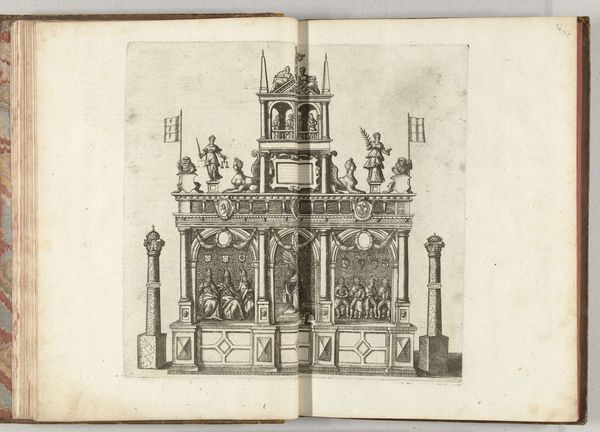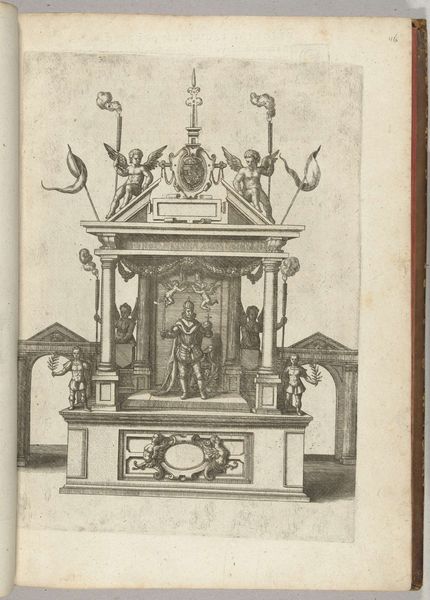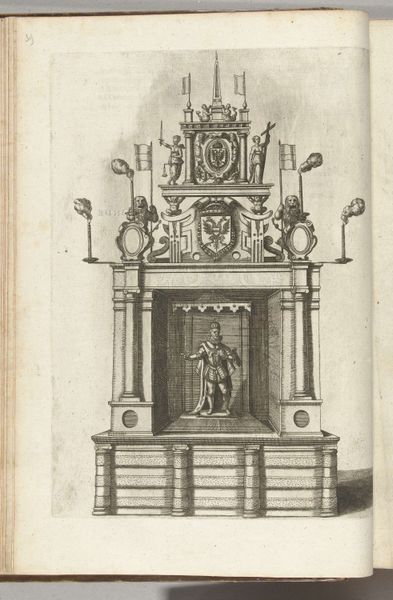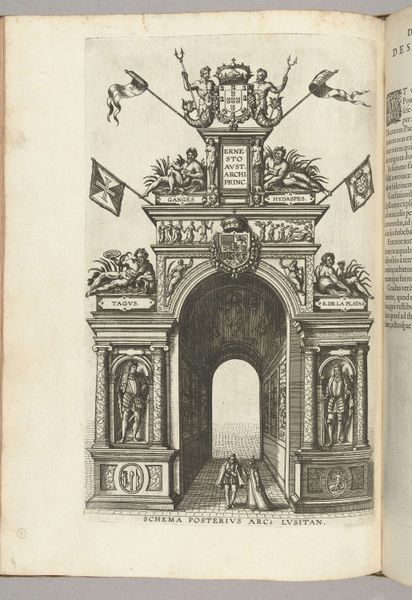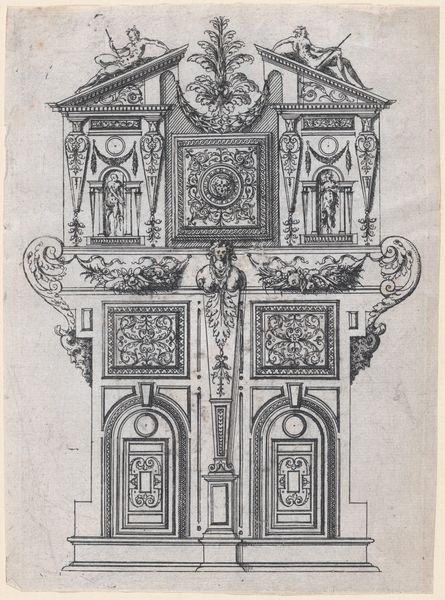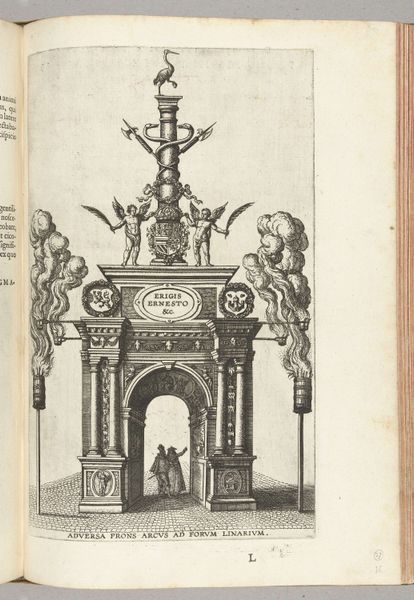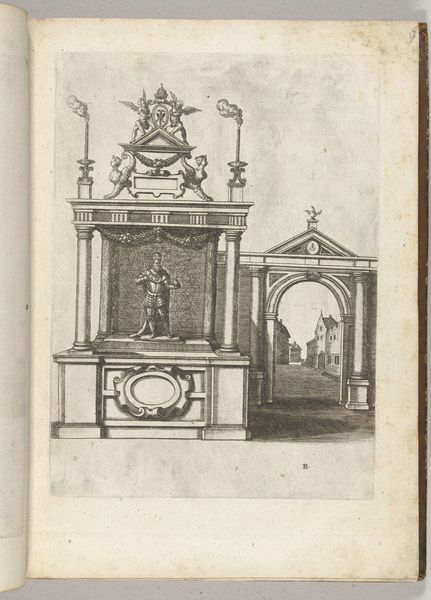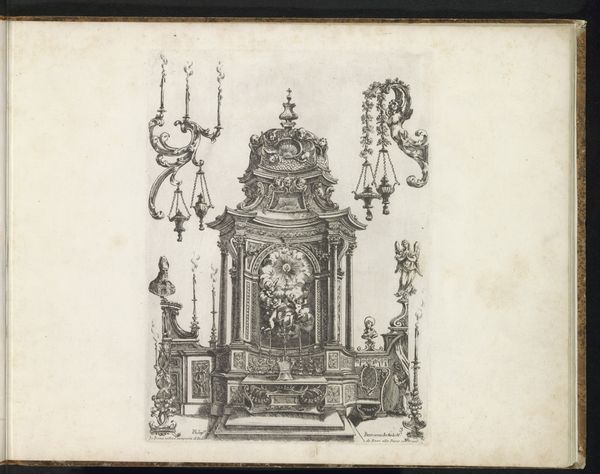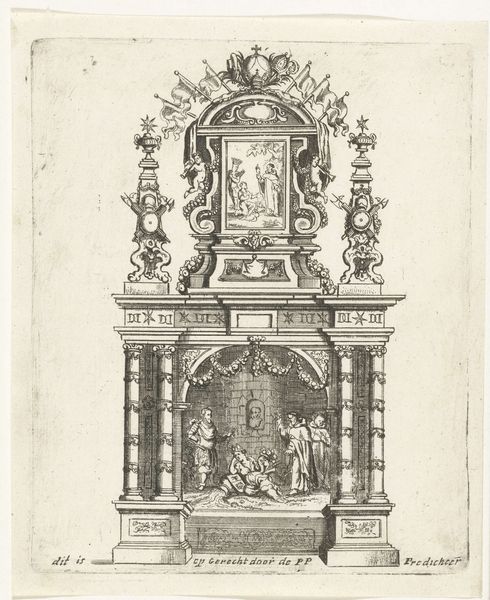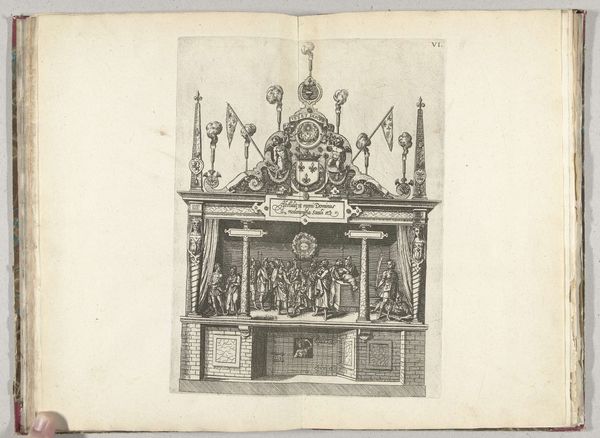
print, etching, engraving
# print
#
etching
#
mannerism
#
coloured pencil
#
history-painting
#
engraving
#
miniature
Dimensions: height 310 mm, width 223 mm
Copyright: Rijks Museum: Open Domain
This engraving, dating from 1594, presents a theatrical display honoring Duke Frederick I. Note the prevalent use of symbolic figures that convey power and divine favor: winged cherubs hover above, female figures stand guard on either side of the Duke's statue, and kneeling women offer laurel branches. Consider the laurel, a symbol of victory and honor since ancient Greece, often associated with Apollo. Here, the laurel branch, a token of reverence, echoes motifs seen in classical sculptures and Renaissance paintings alike. This symbolic offering reminds us of similar gestures in ancient Roman art, where conquered peoples offered laurel wreaths to victorious emperors, signifying submission and respect. The collective memory embedded in such symbols is powerful; they transcend mere representation, engaging viewers on a subconscious level. The image projects an aura of divine right and temporal power. These symbols recur throughout history in an almost cyclical manner, each time imbued with new layers of meaning, continually reshaping our understanding of power and authority.
Comments
No comments
Be the first to comment and join the conversation on the ultimate creative platform.


